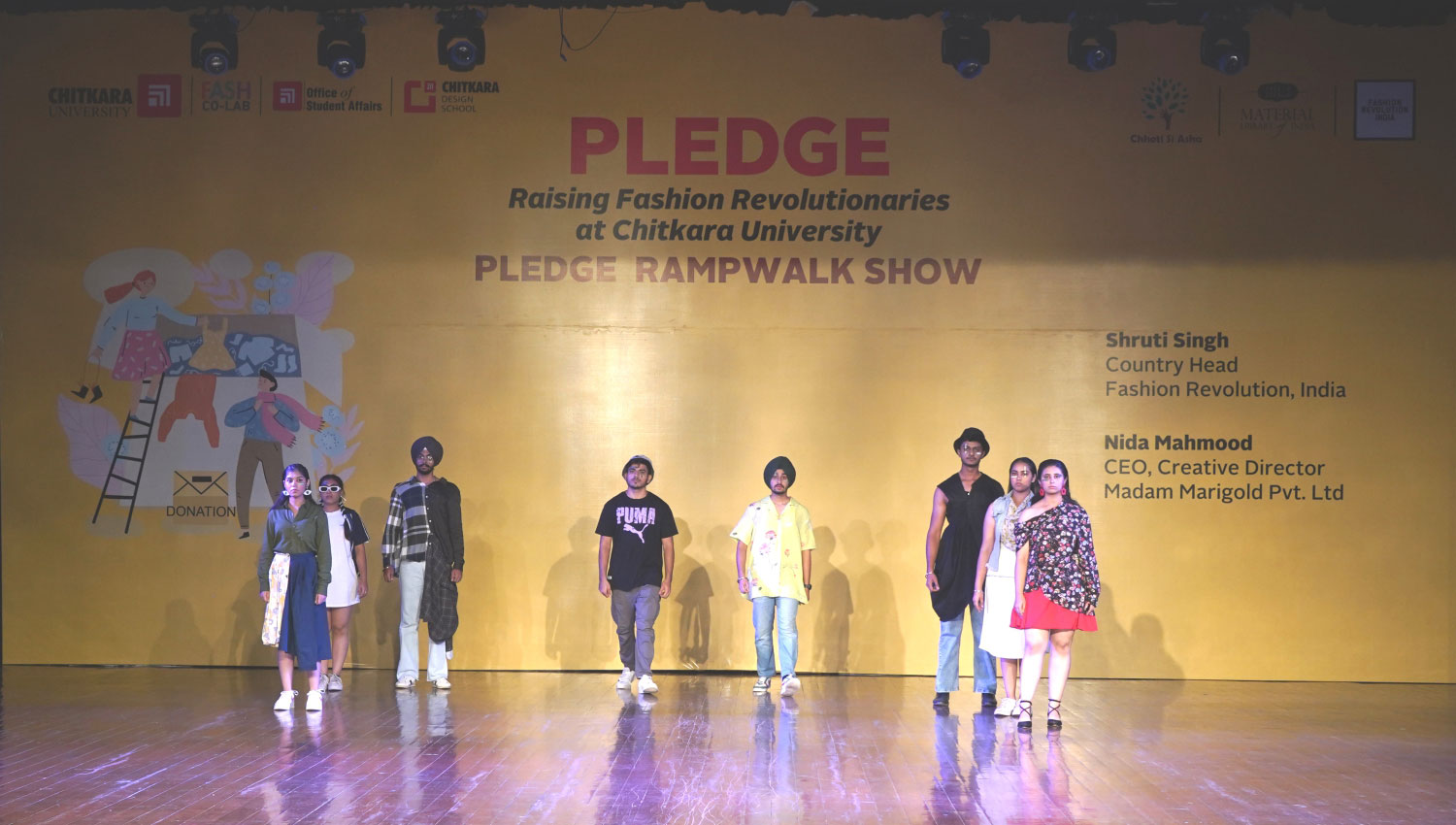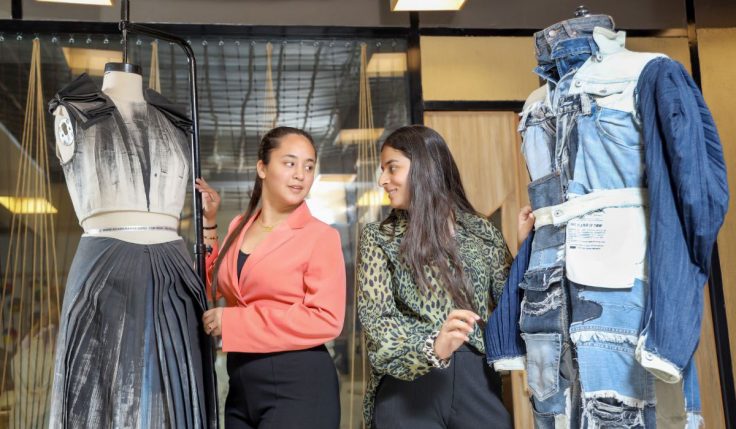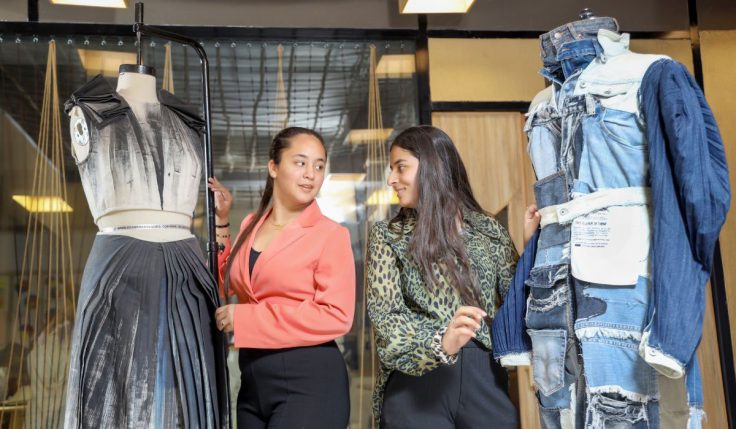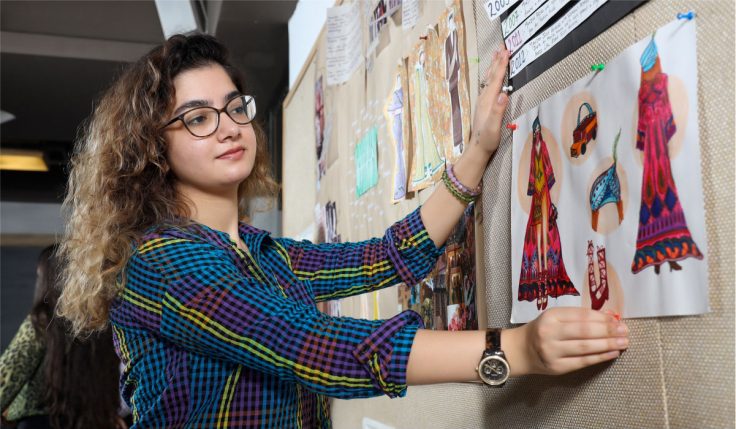The Fashion industry is filled with innovation, self-expression, and limitless creativity. However, the environmental cost of the allure that shows at the front has emerged as a threat to society in many ways. Sustainable fashion is a solution that uses eco-friendly materials and ethical practices in design.
In the past few years, there has been a rising awareness of the need for sustainable fashion design and a shift towards ethical practices and environmental consciousness. In this blog, we will explain the world of sustainable fashion design, its importance, and practical steps that can be taken to include ethics and environmental consciousness in the fashion industry.
Before we begin, let us get a basic understanding what is sustainable fashion.
What is Sustainable Fashion?
Sustainable fashion is a broad term highlighting an approach to design, production, and consumption patterns of clothing that prioritize environmental and social concerns. You can analyze and adjust consumption patterns while focusing on reducing waste and prompting responsible use by encouraging customers to choose quality over quantity.
The movement of sustainable fashion is very closely associated with the global emphasis on renewable energy, environmental sustainability, and ethical production. One of the fundamental elements of sustainable fashion is the use of sustainable products including natural fibers rather than synthetic textiles for creating clothes.
Ethical production is the cornerstone of the sustainable fashion movement for ensuring that workers are treated nicely so that the environment gets protected through practices including the reduction of water usage. This goes along with adhering to the standards that set benchmarks for safety, quality, and environmental care in production.
The overall shift towards sustainable products including renewable energy in the production processes is important for highlighting the industry’s dedication to environmental sustainability. It represents a future where fashion does not just look good but does good as well while reflecting a conscious shift in consumption patterns.
Exploring Eco-Friendly Materials:
Using sustainable materials in the fashion industry represents more than just a simple trend. It is actually a stride towards an eco-friendly way of operating as it allows you to embrace materials that are kinder to the planet. The fashion industry is creating a new narrative by exploring eco-friendly materials that align aesthetics with ethics.
Some of the eco-friendly materials that the fashion world is exploring are mentioned below.
Organic Cotton: Organic cotton is grown without harmful pesticides and fertilizers which makes it a more environmentally friendly option as compared to conventional cotton.
Recycled Polyester: The recycled polyester is made from post-consumer plastic bottles, packets, and other waste materials. It has a comparatively low carbon footprint as compared to traditional polyester and it also reduces waste by shifting plastic from landfills. The apparel and other products created from recycled polyester bear a logo so that customers can see it easily.
Hemp: Hemp is a durable and sustainable fiber that needs less water and fewer pesticides as compared to traditional crops such as cotton. It can be used for making fabrics and sometimes other fashionable products as well. It is an excellent heat resistor, a breathable material with anti-bacterial properties.
Tencel: Tencel is an excellent fiber created from renewable raw materials such as beech wood that requires less water and energy as compared to conventional materials. It is biodegradable. The manufacturing process is the same such as Viscose or Rayon Fibes. It is completely biodegradable and has good absorbency along with an impressive nano-fibril structure that creates a smooth surface.
Pinatex: Pinatex is a sustainable material that is created from pineapple leaf fibers. It is an alternative to leather products including shows, wallets, watch bands, seat covers, and bags. The material reduces waste by using pineapple waste and is also low in cost.
Bamboo: Bamboo is an eco-friendly material in the textile industry and is a fast-growing plant that uses less water consumption in the textile industry without killing the plant. The natural ability to thrive without any toxic chemical intervention makes it an attractive option for sustainable fashion manufacturing. The bamboo fabric is also known for its breathability and moisture-wicking properties along with a silky feel. Bamboo is a versatile material for almost everything from casual wear to luxury garments.
Linen: Linen fiber is a sustainable textile fiber derived from the stems of the flax plant that has been used for many years to produce fabric and clothing because of its strength, durability, and natural beauty. Linen fibres are longer and sustainable as compared to cotton fibres making them famous for high-quality clothing and household textiles. The linen fabrics are absorbent and calm which makes them ideal for warm weather or people who tend to overheat at night.
Ethical Practices in Design:
ircular Fashion: The circular economy is much more than just a trend in sustainable fashion manufacturing. It is a transformative approach that can reimagine the lifecycle of clothing.
As opposed to the conventional linear economy where the resources get extracted, used, and then discarded, the circular economy seeks to create a sustainable loop that can reduce waste and maximize value.
At the center of this concept is the idea of designing for longevity which means creating clothes that are not just stylish but also created to last for a long using durable materials that can further be recycled or repaired.
Circular economy in fashion is a lot about moving away from disposable fashion and embracing quality and craftsmanship. People in the industry who wish to become respected benefit and ethical clothing manufacturers can benefit from this shift as they are inclined to sell their pieces at a higher price by ensuring that the customers see their products as valuable.
Upcycling: Upcycling is more about taking a present garment and changing it into something completely new by adding value and uniqueness. It is a process that celebrates individuality and craftsmanship while turning waste into wearable art.
By completely reimaging old clothing, upcycling is a process that gives garments a second life as it extends their usability and reduces any need for new production. Fashion designers are now embracing upcycling as a form of expression by creating one-of-a-kind pieces that tell a unique story.
There are many prominent fashion brands that keep launching upcycling initiatives by turning old fabrics into new collections. Many customers are also getting involved with independent upcycling projects becoming a popular way to personalise and refresh wardrobes.
Sustainable Textile Materials: Using sustainable materials in fashion represents much more than just a trend and this is a stride towards an eco-friendly way of operating. By using these materials, the world of fashion can weave a new narrative that aligns perfectly well with ethics.
Sustainable textile materials such as organic cotton, recycled polyester, and bamboo are not just environmentally friendly but also used to avoid negative impacts on the environment. They contribute to the quality, innovation, and comfort of clothing.
The sustainable textile materials represent a shift in values where fashion recognizes its role in shaping a much more sustainable future. These materials are an important part of a movement that sees fashion as a positive change by challenging the status quo, inspiring creativity, and offering customer choices that align with values.
Renewable Energy: Renewable energy means using clean and sustainable energy sources including solar, wind, and hydroelectric power for powering fashion companies’ manufacturing, distribution, and retail operations.
Renewable energy sources are an important part of sustainable practices in the fashion industry that help in reducing greenhouse gas emissions, minimizing impact, and prompting a more sustainable future.
Pursuing a 4-Year B.Design in Fashion Design to Learn Sustainable Design:
Pursuing a Fashion Design Program represents a pedagogical approach that aims to help students not only become designers with their creative vision but also conscious and agile professionals who are aware of addressing complex problems in an ever-changing scenario.
A study program such as a 4-Year Bachelor of Design in Fashion Design is capable of shaping students into designers with an awareness of ethics and conversation practices. The program combines technical knowledge of manufacturing with creative design while ensuring students follow ethical practices at each stage.
The program covers many topics including textile design, garment creation, organic dyeing, fabric finishing, and accessorizing. Students can develop many skills including collaboration, creative thinking and expression, design thinking, critical thinking, empathy, etc.
Students also get an opportunity to improve their skills while working with software applications. They can get knowledge on costing, merchandising, accounting, retail, etc. This knowledge is important for growing a business and besides this, students can learn about eco-friendly fabrics, collection processes, etc.
Conclusion:
If you want to learn more about sustainable fashion design then pursue a course such as 4-Year B.Design in Fashion Design from Chitkara University to create a successful career in this field. By learning more about eco-friendly practices, the fashion industry reduces environmental impact and promotes a more sustainable and ethical future for fashion production.






